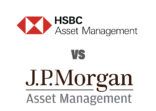Standard Life Investments, which is now part of Standard Life Aberdeen, was named as the worst for its readability score, according to communications business Visiblethread in its June website clarity index report, which ranked 69 fund houses.
Legal & General Investment Management and Santander Asset Management also ranked low.
However, the report stated that 98.5% of top global asset management companies in the world have websites that don’t meet basic readability levels.
Everyone in the industry is guilty of using terms that ordinary savers and investors don’t understand, according to Bella Caridade-Ferreira, CEO at Fundscape.
Caridade-Ferreira said: “Regulation is a factor [in improving communications], but the truth is that compliance people get in the way of writing decent, easy-to-understand documentation. It’s why people often feel investments aren’t good for them because they feel stupid and ignorant when they read them.
“The regulator’s role is to ensure that fund managers are not misleading or lying, and that their messages are appropriate and proportionate for the audience, but that doesn’t stretch to policing how they write it.”
Plain English Society
A spokesperson for Standard Life Investments said the company recognises the importance of communicating clearly and strives to provide accurate descriptions of products and processes “in as easy to understand language as possible”.
All members of the investment writing team are trained using the latest guidance from the Plain English Society and website copy is reviewed by the Wisdom Council on a six-monthly basis, the spokesperson said.
A Santander AM spokesperson said: “We have made significant enhancements to our website and continue to work on improving the clarity of our messaging.”
LGIM failed to respond to a request for comment on the report, as did Eastspring, which also ranked poorly, while Macquarie and Baillie Gifford refused to comment.
However, Fidelity International, which did not rank highly in the index, hit back, stating the report focused on one of the firm’s website URLs not used by the majority of clients. It said it operates 70 websites globally with five main websites in the UK, each focused on different client segments.
The URL used by Visiblethread for the report was the fourth top hit in a Google search conducted by FSA‘s sister publication Portfolio Adviser.
Confusing industry
Financial services are required by regulator to be fair, clear and not misleading.
Richard Philbin, chief investment officer at Wellian Investment Solutions, believes the industry is getting it right on the former and the latter, but said he is not surprised by the findings in the Visiblethread study.
Philbin said: “There is an argument that by making things look complex it makes the adviser, or fund manager look more intelligent and can therefore justify their fees, although that could just be the cynic in me coming out.”
In a less cynical take, he said the industry has to explain some very complex subject matter.
“I would love to see for instance how Standard Life Global Absolute Return Strategies would be fully explained in plain English to Mrs Miggins from Hull who works in an office selling stationery.
“There are certain aspects of our profession that are not easy to explain, and a certain degree of prior knowledge must be needed.”
Regulation to blame
The consensus view among the industry is that compliance requirements are a contributing factor to the level of industry jargon.
Nextwealth’s managing director Heather Hopkins said asset managers are struggling to communicate in plain English and comply with the mountain of disclosure required.
“Firms get the regulation they deserve and Mifid II and Priips are the regulator’s reaction to an historic lack of transparency,” she said. “However, the new disclosure requirements seem to rely on ‘more is more’ – but we all know that’s not true.”
This month, Andrew Bailey, chief executive of the FCA, acknowledged he was concerned about Priips. “It carries a risk that is leading to literally accurate disclosure, which is not providing useful context,” Bailey said.
Some market participants have said Key Information Documents inadvertently create confusion for investors, resulting in unexpected risk categorisations and oversimplified requirements surrounding past performance.
Philbin said looking at fund factsheets over five-year periods between 1993 and now shows the creeping influence of regulation.
“I think you’ll see the space set aside for the commentary probably isn’t too different, the factsheet would have similar amounts of static data.
“But I bet the biggest change would be the amount of words surrounding risks, compliance and so on – all driven by the regulatory pressures placed on businesses.”
Ditch the legalise
Caridade-Ferreira said the solution is to find a creative writer who knows what the rules are, but “throws all the legalese away and writes everything down in as simple a way as possible”.
According to the Visiblethread report, approximately 85% of those analysed had unacceptable levels of passive voice and 97% used long sentences at least three times greater than recommended levels.
The report said asset managers with clearer communication have improved response rates to marketing and spend less on administrative costs usually associated with lighter call volume to call centres.
With the tools available in today’s age, companies have access to multimedia, video, infographics and more, meaning they are able to improve the formats of how they explain to end investors, Philbin added.
“Companies themselves should make things easier – their marketing departments should assist in the communications.”
Hopkins pointed out studies that show Brits spend “more time buying a pair of shoes” than making important finance decisions such as buying a house.
It is imperative asset managers therefore get it right, she said.

















